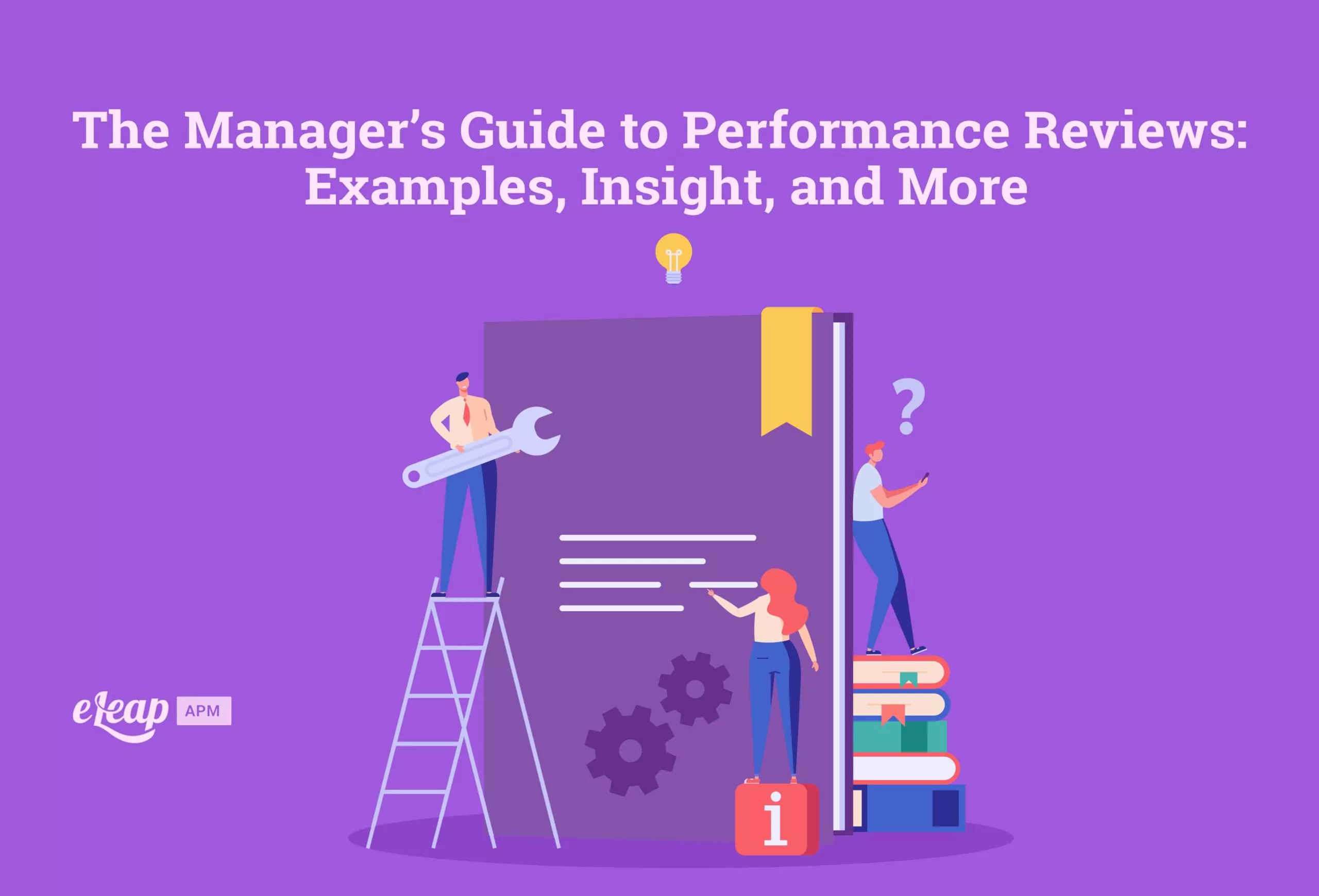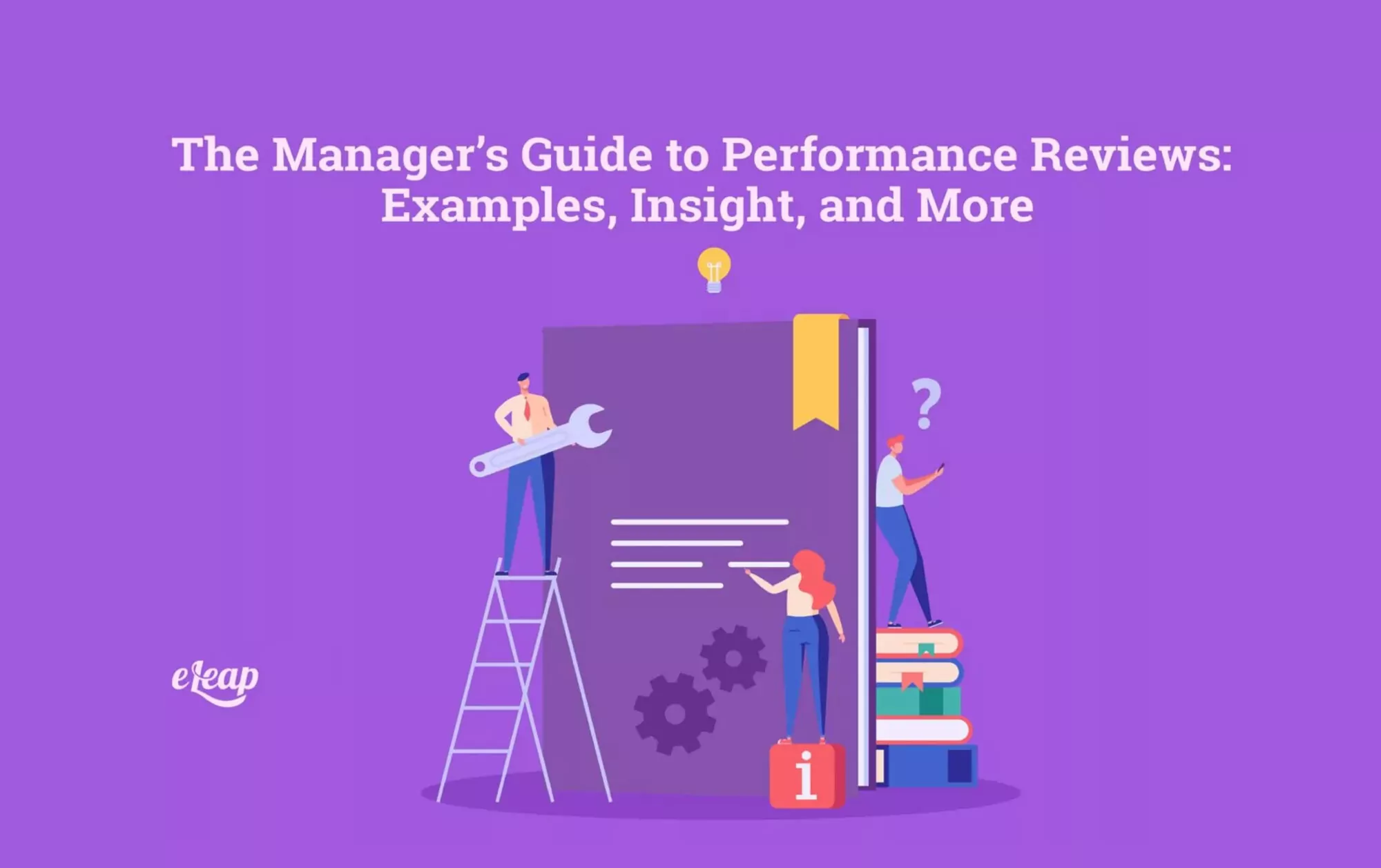The Manager’s Guide to Performance Reviews: Examples, Insight, and More

Like many business processes, the way manager performance review examples are handled has changed drastically in just the past decade and even more so in the past two or three years. The yearly or biannual reviews are no longer useful and are not enough for employees or their leaders. Modern performance management looks at more frequent reviews, real-time monitoring and support, and creative ways to inspire your team to improve.
For managers, performance reviews can be difficult because they involve trying to articulate professionally and accurately how you feel about employees and their growth, whether they’ve lived up to their performance expectations or exceeded them, or whether they perhaps have missed the mark and need a little extra coaching.
Manager Performance Review Examples Can Help
For those who are new to performance reviews or who want to deliver a better experience for their employees, there are already plenty of great resources out there. Some organizations have mastered the review process, and they know just what questions to ask, what topics to cover, and how to lead an effective review, even if it’s just a periodic, informal check-in (hint: these are a good idea).
You will find manager performance review examples all over the Internet, helping you to come up with a review style that suits your company and your employees. And speaking of them, feel free to involve employees in the feedback improvement process — they’ll have some great insights that you may not consider from your side of the table.
You should also use the examples out there to help you decide what you don’t want from your own performance reviews or feedback processes. To that end, let’s first talk about what performance reviews shouldn’t be, and then we’ll get into the details and examples of what effective reviews look like.

What Manager Performance Reviews are Not
Part of understanding performance reviews is knowing what they aren’t as much as what they are. For starters, these aren’t situations where you will be able to resolve all the issues in one sitting or magically “solve” performance problems on the spot. You need to go in with a positive attitude and open mind and be ready to deliver both positive and negative feedback regarding your specific performance metrics, goals, and development.
Performance reviews are not just a chance to critique someone or point out all their shortcomings. Doing this will cause morale issues, which could lead to further problems with employee engagement and even retention. People who don’t feel valued will leave. This is also not a time to sit down and check the boxes without further discussing employee performance or actually giving specific examples of where and how they are excelling or can improve.
If management isn’t on board with manager performance review examples and they treat it like it’s just a part of “standard operating procedure,” employees aren’t going to be inclined to engage with the review process, either. Stop going through the motions and start capitalizing on the chance to create a continuous feedback process that focuses on helping everyone become the best professional version of themselves.
The Great Resignation Changed the Game
What most people don’t realize is that the pandemic also shifted the way people think and feel about work. They’re done putting up with bad management and feeling like a workhorse. They’re not going to continue working for someone who still uses generic annual review templates that are irrelevant and unhelpful—they want actionable feedback, and they want a conversation with someone about how they, specifically, are doing.
In addition to other changes in the world of work, this has put the manager performance review examples process under a microscope. That’s why it is so important to get rid of your outdated ideas and embrace a new way of doing things. Employee engagement and retention are issues that are at an all-time high for companies around the world. As more people leave bad jobs and terrible bosses, companies are rushing to find the issues and fix them.
Many are realizing that the issues stem from improper reviews in the past, poor employee performance tracking, a lack of recognition, and other issues. Many employees left jobs and said they hadn’t even had a formal “performance review” for several years, or they were simply put through the motions but didn’t actually glean any valuable insight or support from those reviews.
All this is to say that companies need to step up their game. It’s time to change the conversation and the process and take advantage of the resources to do so. That includes manager performance review examples, sample review questions, and even just reading up on how other companies are (successfully) handling performance reviews and employee performance management.
What Performance Reviews Should Be
A performance review should be a conversation. It should be constructive, contain both positive and negative feedback, and allow employees to speak openly about their own development, goals, and ideas. It’s not a time to solve the world’s problems or to “correct” employees for not doing things the right way.
For this to happen, you have to know which things to cover. Typically, a review consists of three parts: questions, evaluation phrases, and setting new goals. Getting these right can make all the difference.
Template questions
It’s important not to get too wrapped up in just copying and pasting template questions that you find. the wording used by managers can easily make or break the review for an employee and can affect the review process in several ways. For example, questions that:
- Are vague
- Don’t relate to the job function
- Have no bearing on future growth
should be considered irrelevant and crossed off the list immediately (if they made it on the list in the first place).
The key to asking effective questions, even if they’re a standard set used for all employees, is to pay attention to the things that you are trying to learn from the employee or about their performance. Template questions need to:
- Have clear answers
- Have a limited scope
- Be related to job functions or goals
- Be measurable
For example, you can’t just ask if someone is a “good part of the team” and wait for an answer. That’s too subjective to be useful. Instead, you can ask something like:
Does the employee contribute to the greater goals of the team through effective collaboration and communication?
This not only provides a much more specific question but also focuses on the aspects that are most important to the organization and the employee’s role. It gives specifics, offers a scope, and provides a way to measure the results.
Evaluation phrases
Evaluation phrases are the next important part of the review process. Just like questions, you want to avoid being generic or generalized. The more specific examples and details you can give in your evaluation, the more employees can make connections and find ways to improve and achieve their goals. Action words are important here, as they are more descriptive phrases than things like “completes tasks efficiently” or “demonstrates leadership skills.” While these are good starting points for evaluation phrases, they need more. You should make sure that your phrases are:
- Specific, with examples to back them up
- Not made up of sweeping language that can create bias
- Starting points for a discussion, not just statements
- Directly connecting actions to outcomes
We’ve already given a couple of examples of phrases not to use. Instead, consider something like this:
Is able to foster team development and assume a leadership role to ensure that projects are completed in a timely fashion and deliverables are handed to the client as promised by maintaining a standardized process and encouraging team collaboration and brainstorming.
This will be much more helpful to employees—it highlights how they impact the overall outcome of the business. This example shows you exactly what the employee does and how their actions affect the outcome (completed projects delivered in a timely fashion).
New Goals
It’s always best to end on a good note, which is where the new goals come in handy. Take the time not to list out goals you think are important but to discuss with the employee what they have in mind in terms of career goals, development goals, and more. By giving people individual attention and ownership of their goals, you will be far more likely to have a motivated team that wants to reach its full potential. As always, goals should be SMART:
- Specific
- Measurable
- Actionable
- Relevant
- Timely
For example, instead of giving someone the goal to “get more comfortable with client presentations,” you can help them create a goal to practice presentations in advance with at least one team member to improve their presentation and public speaking skills. See how much more specific that is?
You Get What You Give
These helpful review examples and explanations will guarantee that you get more out of your manager’s performance review and that your employees do.